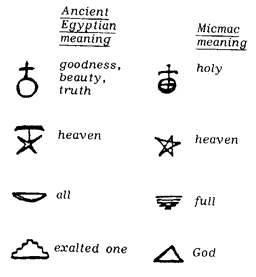Plagerism/Research
Tuesday, June 19, 2012
Friday, June 15, 2012
Archaeologocal Movies
| Apocalypto | The Body | Lord of the Rings Trilogy | The Mummy trilogy and The Mummy trilogy | Valkyrie | War & Peace |
|
| Casablanca | (1942) | National Treasure | Dominion: Prequel To The Exorcist | El Cid 1961 |
Diciplines of Archaeology
- Assyriology (Mesopotamia)
- Phoeniciology (Phoenicia)
- Classical Archaeology (Greece and Rome)
- Egyptology (Egypt)
- Historical Archaeology (Studies civilizations that left behind written records)
- Prehistoric Archaeology (Studies civilizations that did not have any writing systems)
- Protohistoric Archaeology (Studies civilizations that has limited written records)
- Ethnoarchaeology (Studies of modern societies that resembles extinct ones)
- Taphonomy (Studies how objects decay and degrade over time)
Rosetta Stone 1
Above is how the stone is shown displaying by language.
The
Rosetta Stone was the original key to the decipherment of
hieroglyphics. It was a damaged stone (much of the top is missing), found by
Napoleon's invading army, at Rosetta (apparently French for Rashid) in northern
Egypt, in 1799. It was captured by the British while still in Egypt, and is now
in the British Museum. It is a stela (or stele, a stone with writing carved on
it) with the same message (a decree from Ptolemy V) repeated three times, in
hieroglyphics (Late Egyptian), in Demotic (another version of Egyptian), and in
Greek. The first 26 or so lines are missing from the hieroglyphic part. The
Rosetta Stone enabled Champollion and others to finally make progress
deciphering hieroglyphics. Here are all 14 lines, as best I can do from
examining photographs (with a few question marks for signs that couldn't be
figure out):

What is the Rosetta Stone?
The

Hieroglyphics
N-original
N - Later
Combine the two above from thirteenth century B.C. inscription in the temple of Ramses II at Thebes. The pictures say, "Aset, great female, mother of the god, mistress of heaven. and you get it from this:
It's the same with Arabic now, I can spell my name in English in 3 different ways and still not get the sound right!
Now to make things more confusing (just for the fun of it!) - hieroglyphics can be read from left to right, right to left, and from top to bottom; the most common being from left to right.
 But there's a trick to it though, and I think it's quite smart: you just have to see which direction the sign is facing.
But there's a trick to it though, and I think it's quite smart: you just have to see which direction the sign is facing.
This wouldn't work with the water sign for example, so you can check out which way the animal or person signs are looking. So basically if the snake is looking to the right you read from right to left, and vice versa.
Any hieroglyphs inside a cartouche represent a king or pharaoh.
Determinative signs don't have a sound specific to them - they only represent the meaning of the word before them. There are male and female determinative signs that will let you know the gender of the person whose name is written.
Although this script has been dead for many centuries, it's still magical and beautiful. It's the key that unlocked the mystery of ancient Egypt and tells us of so many amazing stories past.
You can get yourself a cartouche with your name written inside in hieroglyphs as a necklace pendant
Enjoy this as I have. More to come.
N - Later
Combine the two above from thirteenth century B.C. inscription in the temple of Ramses II at Thebes. The pictures say, "Aset, great female, mother of the god, mistress of heaven. and you get it from this:
How to Read Hieroglyphics
First of all, there are hardly any written vowels. Just like Arabic, which is what we use in modern Egypt, most of the words are written using consonants only. That's why you'll find that ancient Egyptian words and names written using the English alphabet vary in spelling. For example Rameses and Ramsis, Amun and Amen, etc...It's the same with Arabic now, I can spell my name in English in 3 different ways and still not get the sound right!
Now to make things more confusing (just for the fun of it!) - hieroglyphics can be read from left to right, right to left, and from top to bottom; the most common being from left to right.
 But there's a trick to it though, and I think it's quite smart: you just have to see which direction the sign is facing.
But there's a trick to it though, and I think it's quite smart: you just have to see which direction the sign is facing.
This wouldn't work with the water sign for example, so you can check out which way the animal or person signs are looking. So basically if the snake is looking to the right you read from right to left, and vice versa.
Any hieroglyphs inside a cartouche represent a king or pharaoh.
Determinative signs don't have a sound specific to them - they only represent the meaning of the word before them. There are male and female determinative signs that will let you know the gender of the person whose name is written.
Although this script has been dead for many centuries, it's still magical and beautiful. It's the key that unlocked the mystery of ancient Egypt and tells us of so many amazing stories past.
You can get yourself a cartouche with your name written inside in hieroglyphs as a necklace pendant
Enjoy this as I have. More to come.
Subscribe to:
Posts (Atom)










